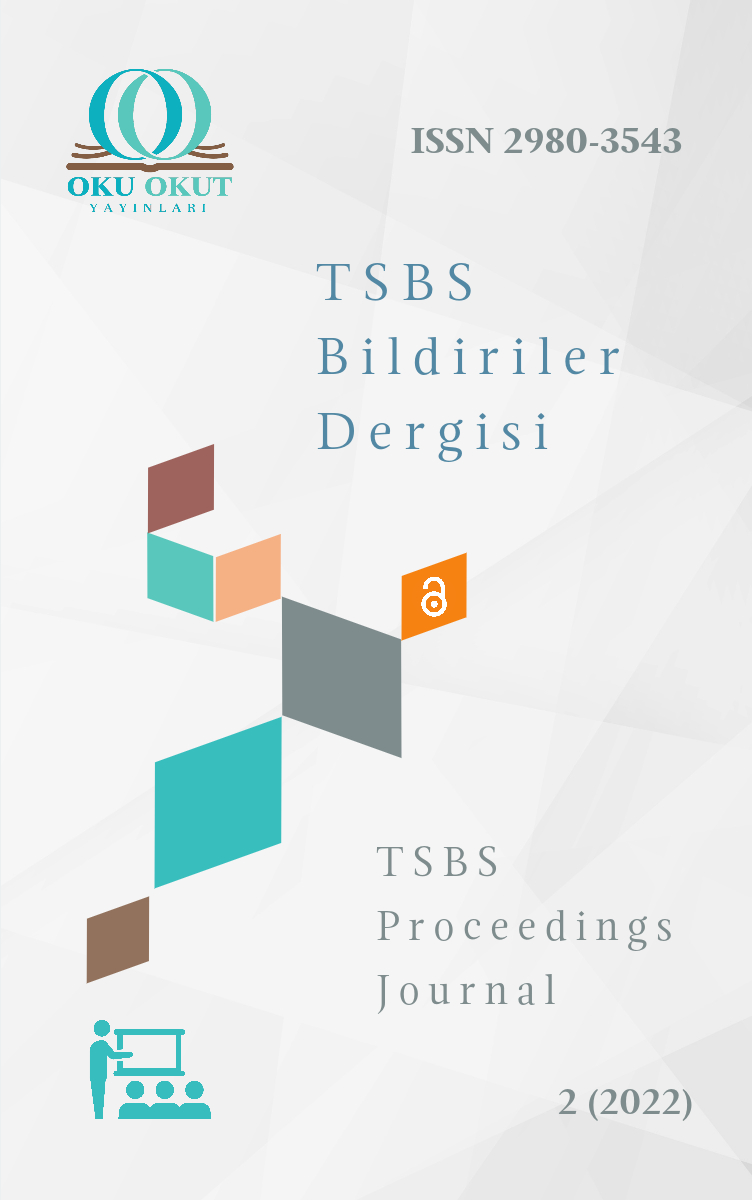An Innovative Essay in Narratology: The 'We' Narrator in Ahmet Mithat Efendi's Novels
Anlatıbilimde Yenilikçi Bir Deneme: Ahmet Mithat Efendi’nin Romanlarında ‘Biz’ Anlatıcı
This study, which examines the ‘we’ narrator that Ahmet Mithat Efendi uses in his novels, which has different characteristics from the classifications of narratology, reveals the innovative side of the author. However, the examined examples provide new data for narratology studies. This study aims to draw attention to the author's novels and to reveal that there are examples outside the borders of narratology. One of the most important elements of the novel genre is the 'narrator'. The narrator is the first element whose voice we hear in a novel. Although this element is handled with different approaches by narratology researchers, the importance of the narrator is emphasized by almost every narrator. No matter how mimetic a fictional text may be, the presence of a narrator is obligatory in every text. The novels of Ahmet Mithat Efendi (d. 1912); are novels that carry the effects of romanticism along with tradition, aim to educate and raise awareness of the reader, and therefore keep the dominance of the narrator strong. It is inevitable for the narrator to be dominant and free, who discusses these issues in his fictional works as well as his writings on science, literature, child education, the necessity of women's reading, social and cultural innovations, European life, the importance of personal enterprise, economics, morality, religion, and law. In this context, the narrator's point of view is mostly in a dominant position. Ahmet Mithat Efendi; is a writer who thinks about the technique as well as the teaching of the novel and does not hesitate to try innovations while performing his art. This aspect of his, by providing diversification of his narrator, carried the author to a different point from other novelists of the period. In this study; After examining the definitions and classifications of the 'narrator', Ahmet Mithat Efendi's essay on the narrator 'we', which is an original usage that does not fit the narrator's classification of the narrators, used in his novels; It will be tried to be illustrated with examples taken from the author's novels. The results obtained by examining this technique, which the author applies in the form of including the 'narrator' and the 'interlocutor' in the fictional world of the novel, will present new data to the 'narrator' classifications of narratology. As a result, we can say that; Although Ahmet Mithat Efendi is a writer who gives the first examples of the Turkish novel, the fact that he makes an essay that preserves its originality even today reveals that the author is willing and brave about new applications and thinking about the art of the novel. The ‘we’ narrator used in these early examples of the novel genre maintains its originality even today as a technique that is outside of the narrator's classifications of narratology and that puts the (fictional) narrator and the interlocutor into the fictional world and communicates with the heroes of the novel.
Ahmet Mithat Efendi’nin romanlarında kullandığı, anlatıbilimin tasniflerinden farklı özellikler taşıyan ‘biz’ anlatıcının incelendiği bu çalışma; yazarın yenilikçi yönünü ortaya koymaktadır. Bununla birlikte, incelenen örnekler anlatıbilim çalışmalarına yeni veriler sunmaktadır. Bu çalışma, yazarın romanlarına dikkat çekerek anlatıbilimin sınırlarının dışında örneklerle karşılaşıldığını ortaya koymayı amaçlamaktadır. Roman türünün en önemli unsurlarından biri ‘anlatıcı’dır. Anlatıcı, bir romanda sesini ilk duyduğumuz unsurdur. Bu unsur, anlatıbilim araştırmacıları tarafından birbirinden farklı yaklaşımlarla ele alınsa da anlatıcının önemi, hemen her anlatıbilimci tarafından vurgulanır. Kurmaca bir metin ne kadar mimetik özellikler gösterse de her metinde bir anlatıcının varlığı zorunludur. Ahmet Mithat Efendi’nin (ö. 1912) romanları; gelenekle birlikte romantizmin de etkilerini taşıyan, okuru eğitmeyi ve bilinçlendirmeyi hedefleyen, bundan dolayı anlatıcının hakimiyetini çoğunlukla güçlü tutan romanlardır. Bilim, edebiyat, çocuk eğitimi, kadınların okumasının gerekliliği, sosyal ve kültürel yenilikler, Avrupaî yaşam, şahsî teşebbüsün önemi, iktisat, ahlâk, din, hukuk gibi alanlarda yazdığı yazılarının yanı sıra kurmaca eserlerinde de bu meseleleri tartışan yazar için anlatıcının hâkim ve özgür olması kaçınılmazdır. Bu bağlamda anlatıcının bakış açısı da çoğunlukla hâkim bir konumdadır. Ahmet Mithat Efendi; romanın eğiticiliğinin yanı sıra tekniği üzerine de düşünen, sanatını icra ederken yenilikler denemekten çekinmeyen bir yazardır. Onun bu yönü, anlatıcısının da çeşitlenmesini sağlayarak yazarı dönemin diğer romancılarından farklı bir noktaya taşımıştır. Bu çalışmada; ‘anlatıcı’nın tanım ve tasnifleri incelendikten sonra Ahmet Mithat Efendi’nin romanlarında kullandığı, anlatıbilim araştırmacılarının anlatıcı tasnifine uymayan, orijinal bir kullanım olan ‘biz’ anlatıcı denemesi; yazarın romanlarından alınan örneklerle gösterilmeye çalışılacaktır. Yazarın ‘anlatıcı’ ve ‘muhatap’ı romanın kurmaca dünyasına dahil etmesi şeklinde uyguladığı bu teknik incelenerek elde edilen sonuçlar, anlatıbilimin ‘anlatıcı’ tasniflerine yeni veriler sunacaktır. Sonuç olarak diyebiliriz ki; Ahmet Mithat Efendi’nin Türk romanının ilk örneklerini veren bir yazar olmasına rağmen bugün bile orijinalliğini koruyan bir denemede bulunması, yazarın roman sanatı üzerine düşündüğünü, yeni uygulamalar konusunda istekli ve cesur olduğunu ortaya koymaktadır. Roman türünün bu erken örneklerinde kullanılan ‘biz’ anlatıcı, anlatıbilimin anlatıcı tasniflerinin dışında kalan, (kurmaca) anlatıcı ve muhatabı kurmaca dünyanın içerisine sokarak roman kahramanlarıyla iletişime geçiren bir teknik olarak günümüzde bile orijinalliğini korumaktadır.

Telif Hakkı (c) 2022 Dr. Zeynep Taşçı
Bu çalışma Creative Commons Attribution-NonCommercial 4.0 International License ile lisanslanmıştır.
CC BY-NC 4.0 lisansı, eserin ticari kullanım dışında, her türlü ortam ve formatta paylaşılmasına, kopyalanmasına, çoğaltılmasına ve orijinal esere uygun şekilde atıfta bulunmak kaydıyla yeniden düzenlenmesine, dönüştürülmesine ve eser üzerine inşa edilmesine izin verir.
İndir
Makale Bilgileri
- Konu Türk Dili ve Edebiyatı
- Gönderim 26 Temmuz 2022
- Yayım 14 Ağustos 2022
- Sayı Sempozyum 2 (2022): TSBS Bildiriler Dergisi
- Bildiri Bilim Alanı Türk Dili ve Edebiyatı
Taşçı, Zeynep. “Anlatıbilimde Yenilikçi Bir Deneme: Ahmet Mithat Efendi’nin Romanlarında ‘Biz’ Anlatıcı”. Türkiye Sosyal Bilimler Sempozyumu 2 (August 14, 2022). https://doi.org/10.55709/TSBSBildirilerDergisi.2.207






